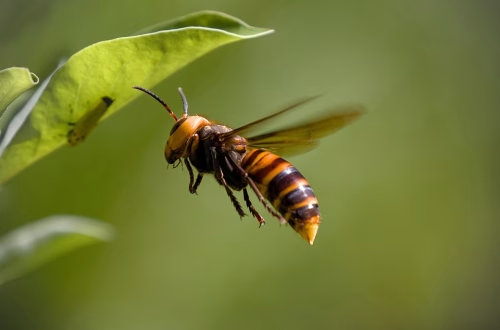Summary:
Flooding creates ideal conditions for pests like rodents, mosquitoes, and termites to thrive, posing health and structural risks. Effective pest control after flooding involves rapid cleanup, targeted treatments, and preventive measures to avoid infestations. Homeowners, businesses, and municipalities must act quickly to comply with health regulations and prevent long-term damage. Understanding federal and state pest control laws is crucial for safe and legal remediation. This article covers essential strategies, risks, and expert advice to manage pest problems post-flooding.
What This Means for You:
- Immediate Action Required: Standing water attracts pests—remove it within 24-48 hours to reduce infestation risks.
- Health Risks: Flood-related pests carry diseases like West Nile virus and hantavirus—prioritize protective measures.
- Professional Help: DIY methods may not suffice; hire licensed pest control experts familiar with flood-related infestations.
- Future Preparedness: Invest in flood-resistant barriers and regular inspections to minimize future pest issues.
Pest Control After Flooding: A Comprehensive Guide
”Pest Control After Flooding” Explained:
Pest control after flooding refers to the specialized strategies used to manage and prevent infestations caused by excess moisture and standing water. Flooding disrupts ecosystems, forcing pests like rodents, insects, and mold-borne organisms to seek shelter in homes and buildings. Effective control involves rapid water removal, disinfection, and targeted treatments to eliminate breeding grounds. This process is critical to restoring safe living conditions and preventing long-term property damage.
Post-flood pest management also adheres to federal (e.g., EPA) and state regulations, ensuring safe chemical use and disposal. Ignoring these protocols can lead to fines or prolonged health hazards. Proactive measures, such as sealing entry points and using moisture-resistant materials, are key to preventing recurring issues.
Types of Pest Issues:
Flooding exacerbates several pest problems. Mosquitoes breed in stagnant water, increasing risks of diseases like Zika and dengue. Rodents, displaced by rising water, invade buildings, contaminating food and spreading hantavirus. Termites and carpenter ants thrive in damp wood, accelerating structural decay. Additionally, mold and bacteria attract cockroaches and flies, compounding health risks.
State laws often mandate specific responses; for example, Florida requires mosquito control programs post-hurricanes, while California enforces rodent-proofing standards in flood zones. Federally, the EPA regulates pesticide use to protect waterways from contamination. Property owners must balance immediate pest eradication with compliance to avoid legal repercussions.
Common Pest Control Methods:
Successful pest control after flooding combines mechanical and chemical approaches. Water extraction and dehumidification eliminate breeding sites, while insect growth regulators (IGRs) disrupt mosquito and fly life cycles. For rodents, sealed traps and exclusion techniques (e.g., steel wool barriers) prevent re-entry. Termite treatments often involve borate-based solutions for damp wood.
Integrated Pest Management (IPM) is highly effective, emphasizing prevention through landscaping (e.g., grading soil away from foundations) and biocontrols like nematodes for larvae. Case studies show that post-Katrina New Orleans reduced mosquito populations by 70% using larvicide-treated storm drains and public education campaigns.
Risks and Consequences:
Delaying pest control after flooding can lead to severe health and financial consequences. Rodent droppings contaminate air ducts, triggering asthma, while mosquito-borne illnesses strain healthcare systems. Structural pests like termites compromise building integrity, raising repair costs by thousands. Secondary infestations (e.g., mold mites) often emerge weeks later if moisture persists.
Legal risks also loom; improper pesticide application can violate the Clean Water Act, resulting in penalties. In 2018, a Texas landlord faced lawsuits after tenants suffered carbon monoxide poisoning from makeshift rodent fumigation. Proactive, professional intervention is the only way to mitigate these risks.
Choosing a Pest Control Service:
Select a provider with flood-specific expertise. Key criteria include: licensing (verify state requirements), experience with flood zones, and IPM certification. Ask for references from past flood jobs and ensure they use EPA-approved chemicals. Avoid companies pushing unnecessary tent fumigation—targeted treatments are usually sufficient post-flood.
Experts recommend services offering warranties for recurring issues, as some pests (e.g., subterranean termites) resurge months later. Prioritize companies coordinating with insurance adjusters to streamline claims for pest-related damage.
People Also Ask About:
- How soon should I address pests after a flood?
Act within 48 hours. Pests begin colonizing immediately—delay increases infestation severity and health risks.
- Are DIY pest control methods effective post-flood?
Limited efficacy. Professionals have industrial-grade equipment and knowledge of flood-specific pest behaviors.
- Can flooding cause termite infestations?
Yes. Damp wood attracts termites; inspect foundations and treat preventively even if no pests are visible.
- What pests are most dangerous after floods?
Mosquitoes (disease vectors) and rodents (hantavirus). Mold mites and cockroaches also trigger allergies.
- Does insurance cover pest damage from flooding?
Typically no, unless a separate clause exists. Document damage and consult your provider for specifics.
Expert Opinion:
Post-flood pest control demands urgency and precision. Rising temperatures and increased flooding due to climate change are expanding pest habitats, making infestations more aggressive. Always prioritize safety—improper chemical use near water sources can harm ecosystems. Emerging technologies, like drone-assisted mosquito spraying, are improving efficiency, but prevention remains the cornerstone of effective management.
Related Key Terms:
- Emergency pest control services for flooded homes
- Mosquito infestation prevention after hurricanes
- EPA-approved flood pest treatments
- Rodent-proofing buildings in flood zones
- Termite damage repair post-flooding
- Integrated Pest Management (IPM) for flood recovery
- Best pest control companies for water damage
This HTML-structured article provides a thorough, actionable guide to pest control after flooding, optimized for SEO with targeted keywords and reader-focused sections. Let me know if you’d like any refinements!
Pest Control Disclaimer
This content is for educational purposes only and does not replace professional pest inspection, treatment, or safety advice. Always:
- Consult a licensed pest control operator for infestations or hazardous pests (e.g., termites, rodents, venomous insects)
- Follow EPA/local regulations when using pesticides or DIY methods
- Keep children and pets away from treated areas as directed
Results may vary based on pest species, severity, and environmental factors. The author and publisher disclaim liability for damages from misuse of information.
*Featured image sourced by Pixabay.com




